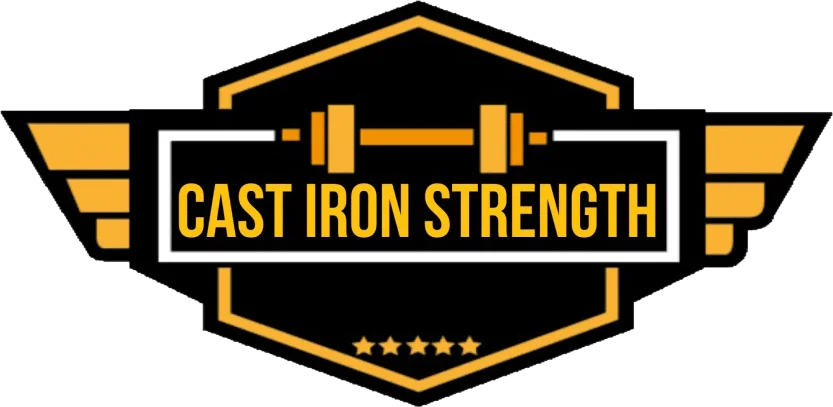Oh look everyone, do you see that on the horizon it’s another non-existent dichotomy grazing upon the fields of gullibility. The goal of training should be to increase your fitness in the task or fitness component you wish to improve.
Testing and training are two separate things and they can form the central pillars of a good system designed to increase an athlete or a person’s fitness at a task. If you have a good standardised test or measure then you can use it to guide and to inform your loading and training strategies. Testing is pretty imperfect however in some sports it can be a real pain in the ass to organise.
If you are involved in a seasonal sport where competitions come thick and fast during a truncated amount of time say pretty much any team sport. Then trying to test during those periods of time can be pretty counterproductive especially during a period of time where your readiness and ability to perform at the weekend or a certain day of the week or month is way more important than your fitness scores.
Depending on the fitness attribute we are trying to test or the ability we are training for the usefulness and the proximity of the test we are using to the skill or fitness attribute we are trying to get better at can vary. Lifting is an incredibly easy sport to do this with but I am going to use a separate example to develop and then once we have developed more of an understanding of this concept we can then go ahead and apply it to the thing we all want to get better at on this blog getting stronger.
Population – Rugby Team
Training goal – Aerobic and game specific fitness
Training options – MAS running, Off feet fitness and Conditioning games
Training phase – Mid competitive season
Testing options – Yo-Yo test, Bronco test, Watt bike ramp test
We will look throughout training options, the positives and negatives and we will do the same with the testing options.
Why do we want to increase aerobic fitness? Fitter players are more effective in games as they can maintain work rate higher, they also recover faster from games and training, they are more likely to be available for games/training and they will get injured less.
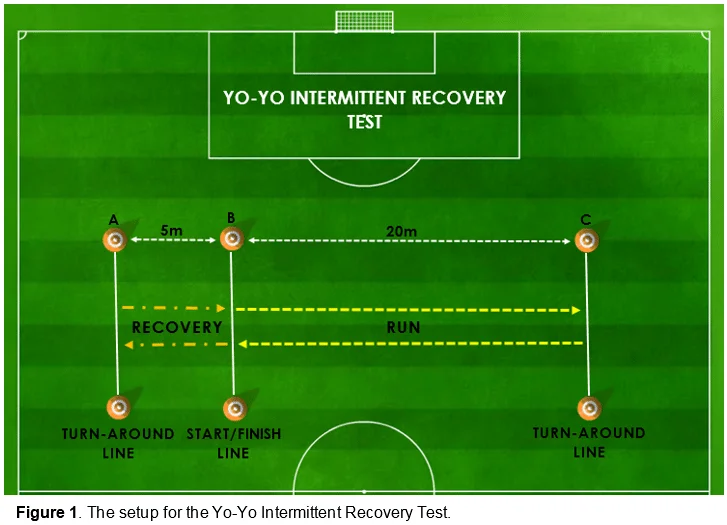
Training options
| Option | Pros | Cons |
| MAS running | Good dose response relationship we can more or less guarantee and effect with targeted training, More specific to games as running, low agility demand and change of direction makes it less prone to injury. Time efficient training method. Easy to use monitor of fitness can see players making or not making targets | Low agility demand and change of direction makes it less specific to game scenarios. Less engaging than more sports specific training. |
| Conditioning games | Balls skills, response to stimulus, change of direction way more specific to game scenarios. Can put conditions on games to make them more related to phase play and what the coach wants. If you can integrate it with tactical outcomes the most efficient training method. | Less targeted dose response players can hide. Harder to monitor fitness without metrics like heart rate or GPS that aren’t available to ameture teams. Open nature makes it more prone to injury |
| Off feet fitness | Good dose response, can set targets and workloads so easy to monitor, lowest risk of injury. | By far least specific training method we have looked at. |
Testing options – testing should be the gold standard for measuring how fit or not you or your player are. It is however invasive regardless of how it’s done but it is incredibly useful information to have to hand to lead your interventions and loading.
| Option | Pros | Cons |
| Yo-Yo test | Standardised Vo2 max test designed for field sports. Easy to implement and very reliable. | High loading for a single training session. High stress test no one likes it. |
| Bronco test | Incredibly easy to implement test. Reliable and quick. | Not as well standardised. More of a proxy than a physiological test |
| WattBike Ramp test | Easy to implement, Valid measure of Vo2 Max, low impact | Least specific test and not practical for squads. |
Now the period of training is going to influence what we do massively. During less specific periods of training such as the start of pre-season we can use what we want and this is a good time to implement something like a yo-yo test as an entry and exit test into the training block. When we have less control over the training schedule we might want to implement something less invasive such as the Bronco test. With an injured player or a player who requires targeted aerobic work to come up to standard we might chose the watt bike ramp test.
During periods of high competition demand we are highly unlikely to be able to test but we will want to still keep on top of aerobic and game specific fitness as it’s crucial to your success. This is where monitoring comes into play if we have the facility to do so.
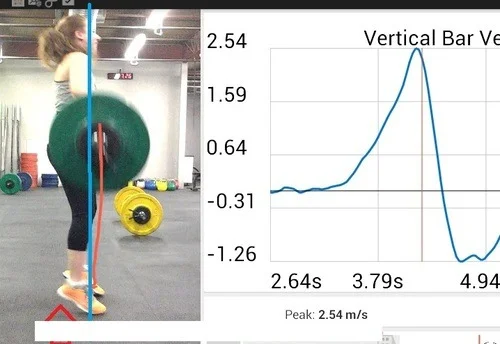
Monitoring vs Testing
In professional sports, testing is a bit of a dinosaur as they now tend to use monitors both subjective and objective to track readiness to train and measures of fitness. Through the use of wellness questionnaires, physiotherapy screening, GPS, Heart Rate monitoring, weights log (with modifiers such as RPE, Bar speed, EST RM), speed training/timing, Jump monitoring, etc to name a few of the objective and subjective monitoring tools used in professional setups to keep tabs on an athlete’s preparedness. Testing is still used as an entry/exit point into the program and it can also be used during physical training aspects of the program such as the pre-season.
When you look at testing and monitoring in a sport like rugby or football then you can see that monitoring is the obviously superior strategy whilst it provides a proxy for actual numbers for example meters per minute during a phase of team training taken from the GPS unit is a good proxy for work rate and a consistently high work rate during training would be a good indicator of physical fitness. Now we could use in-season testing to get a pretty concrete measure of players aerobic fitness or running capacity however this places extra load in the program thus it increases tissue loading and injury risk or alternatively we take away from the tactical training load so we can get our test in thus compromising the sports program. Neither of these options is very attractive. So you can see why monitoring is so ubiquitous in professional sport especially team sport.
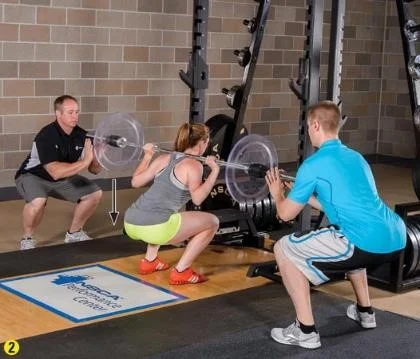
Monitoring Strength levels vs testing strength levels
Now we can get into what this post is about strength training and the apparent want or need for an athlete to go off program to hit a max or the coach flying off the handle or getting super annoyed with an athlete going off program to do that. Somehow fucking up their master plan or program. First of all, there is asymmetrical knowledge here or there is a gap in the understanding either from the coach’s perspective or from the athlete’s perspective.
The coaches knowledge gap – if there is a disconnect between the athlete wanting to know or being anxious about their level of preparation and feeling the need to go off program to reassure themselves or to find out where they are then the coach has knowledge of the process or a plan they haven’t sufficiently shared with the athlete. If the athlete is engaged or has knowledge of the process and where they are in it they are going to feel more secure and happier to stay the course and not go off plan.
The Athlete’s Knowledge gap – when it comes to an athlete feeling the need to go off program and try an max or to push a rep set to an RPE 9-10 when they aren’t supposed to it is due to a lack of security or doubt. Doubt is perfectly normal in all of human activities and it can lead to a lot of people acting against their own self interest. What the athlete needs is knowledge of their own trajectory and some method to measure their current level of preparedness and match that against their trajectory to see if it matches up. If they are balls deep in an over reach phase, they feel tired, sore and overworked but are meant to (which maybe they don’t realise) and then go off plan try to go heavier than programed and fail miserably because their fatigue levels are really high, this then sends them into a negative spiral of doubt.
From both positions, the athlete or coach can enter into a dialogue to query anything they aren’t sure about or to reassure themselves. It is also part of the training process to empower athletes and coaches to know where they are at the minute, where they are headed and to use that information to help inform minute to minute choices to try and optimise their trajectory.
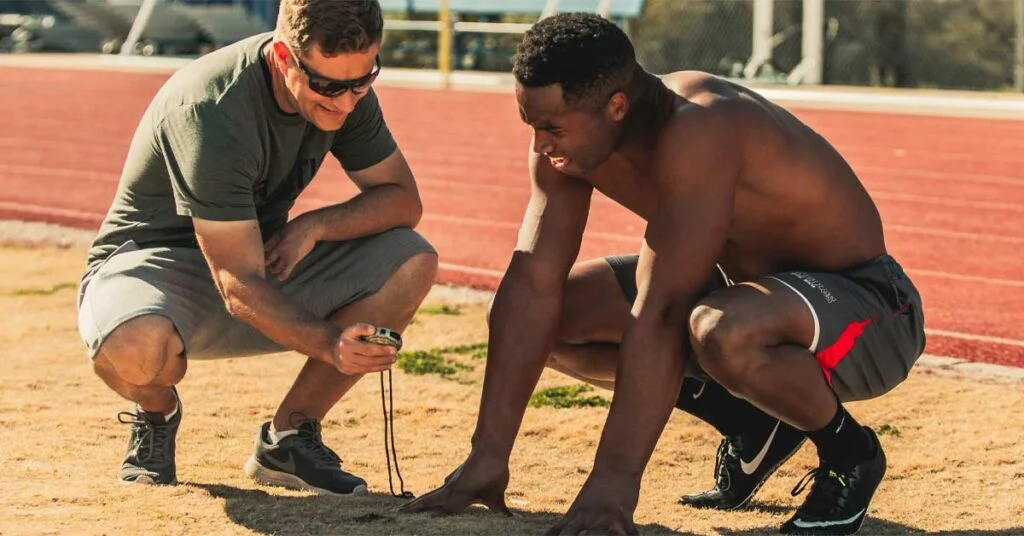
Ways to make sure there is as little asymmetrical knowledge or blind spots in the relationship as possible to maximise buy in and adherence
When it comes to buy-in and engagement in a process knowledge of success or performance is a key factor as such we need to set up a framework for the coach and athlete to both engage with
- Goals and timelines to achieve those goals
- Entry level so we know where we are and what we are going to do to try and work towards those goals
- Key performance indicators – the speedometer of your progress towards those goals
- Shared dialogue and mechanisms to adapt the trajectory and plan
- Exit points or reflection points to see how things have been going and to allow adjustment of targets or goals up or down.
When it comes to strength training programs and competing a lot of these interfaces or targets will be set by competition dates and training towards those competitions. As a strength athlete or coach we are in a pretty tricky situation where the arguably more important variables such as technical efficiency and long term sustainable development only have subjective feedback and sentiment to back them up vs the weight you are lifting in sessions and the last time you hit a 1-3 reps max.
The balancing act of keeping an athlete to the correct course of making the wise decision when they are being constantly confronted with their own ability every time they train is slightly more difficult in a sport like powerlifting, weightlifting or strongman.
Setting expectations – this should be driven by the athlete and guided by the coach. One of the biggest sins I think coaches can be guilty of is being like overbearing parents and putting upon their clients/athletes expectations and outcomes that they want them to achieve. If a lifter doesn’t want to compete then you shouldn’t force them to do it. Much in the same way you shouldn’t be putting your lifters down, you shouldn’t pressure or browbeat them into making decisions and doing things before they are ready. The most important part of this process is for the athlete to come up with their own expectations and goals and for the coach to come and meet them halfway. To bring their expertise and guidance to help give their goals more form and to help provide a road map towards successful completion.
Entry-level / Knowing where you are at – before you start the process of training you need some fact-finding or due diligence to see where you are currently at. I like to do this through pre-existing training logs however sometimes the best way to go about this process is to perform some testing. This doesn’t have to be a 1 rep max it can be a 5 rep with an RPE cap or if you have the facility something like a bar speed trace covering % of RM can be used to accurately judge a max. However, as lifters we shouldn’t be scared of doing heavy sets so there is nothing wrong with rep out sets or rep max sets especially when there is structure and purpose to them. For a competitive lifter, this process is extremely easy post-competition, you can also look to set an entry point at the end of a block there is no hard and fast way to conduct this process the important thing is that there is a process.
Key Performance indicators – this is a very important one for lifters as it gives them a barometer for them to check if they are ever wondering where they are at or curious as to how training is going. It can be useful to have some kind of standard lift at the start of the week such as a single at an RPE 7 or 8, or some singles with a bar speed cap if you have the ability to measure it are good representative ways of getting this information. The main thing is to build in and cultivate a knowledge of performance. It is possible to infer how you are getting on with training based on how working sets feel you can use objective measures available to everyone such as video/smartphone apps and subjective information such as RPEs and wellness questionnaires. Having feedback loops in the program that act as a measure as to how things are tracking but also early flags to anything that might not be going well are very important parts of any coaching or training process.
Shared Dialogue and feedback loops – a few years ago I went away from producing 4-6 week-long blocks of training and went to delivering weekly plans following a long-term plan. I did this because it allowed me the flexibility I needed to adapt the plan when new information popped up and we needed to pivot. A very common one is when people are either unexpectedly stressed out with work or life, they come down with a sickness or they get injured. All things that are realistically going to happen in everyone’s life with a long enough time frame. Sure you might not have any issues in the next 12 weeks but in the following 156 weeks that chance becomes more of a high probability event. I try and encourage my lifters to send me regular video updates of their lifts this gives me a lot of information as to how they are tracking, I provide the mechanism for them to fill in a weights log with an adjoining RPE that lets me see how things are tracking when I do the weekly plan update and I try and maintain open channels of dialogue with them generally speaking I find this lets us catch a lot of problems or issues fairly early on. It’s not perfect but no system is. The use of other metrics such as wellness questionnaires, check ins and block reviews provide much the same functionality from using systems like that in the past. The objective nature of them or the numbers really aren’t that important; it’s the conversations and adjustments that are the important outcomes. Metrics and feedback create conversations and the conversations inform your trajectory and outcomes. A plan without these mechanisms isn’t very robust; some would call it shit.
Exit or reflection points – again for a competitive lifter these points come naturally in the process post competition is an objective yardstick of where we are in the process and it also allows lifter and coach to have a look at what the next goal is and how they can improve on their performance going forward. In normal training these points are set by the coach and the lifter as a coach I must admit to being heavily biased towards building capacity and training and not programing in regular testing events for lifters or athletes who don’t compete as much but they definitely have merit. For a lifter who follows the training process well and they have all the above in place they can always infer a pretty confident proxy as to where they are in terms of maximum performance but it’s hard to replace the concrete knowledge or experience of doing a 1 reps max either at competition, mock competition or a testing event. The point of illustration being for a lifter or athlete who is a regular and serious trainer there should be some kind of testing or objective yard sticks placed through the training year as concrete exit points or points of reflection.
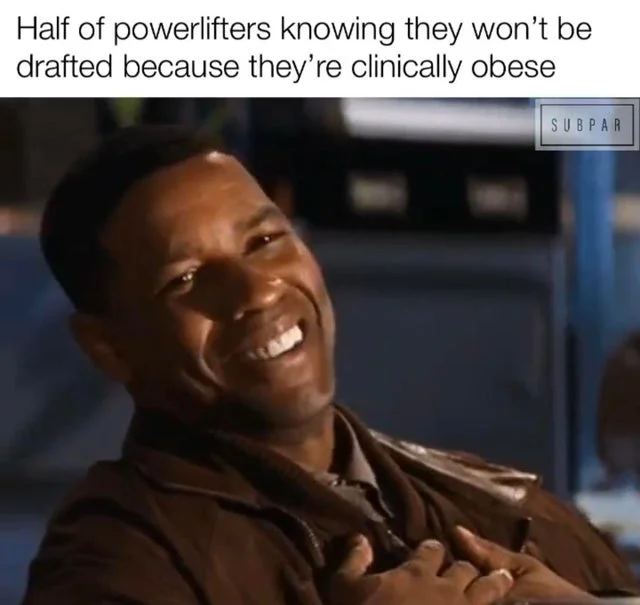
There is no testing v building dichotomy in training.
In conclusion I think this is one of many straw men that are created in the minds of meme creators, coaches and lifters. Going off program to test your maximum is not really a sign that you aren’t following the process or that you are destroying your plan that you coach has. It is more and indication that there is asymmetrical knowledge in the process and either the lifter or the coach isn’t sure of something.
Any robust planning and coach/athlete relationship will head this off at the pass. If you feel the need to go off program and do a max when following a template you are doing so as a consenting adult while performing a hobby you purportedly enjoy so go for it but own the decision and the consequences.
If you are a coach who finds yourself getting constantly fucked off with your athletes or lifters going off plan or doing off program maxes ask yourself why is this happening. If you are experiencing this all the time the independent variable in this scenario is you.
You can’t build strength by displaying it going to maximum in training isn’t going to create any adaptation outside of that one session. Practicing your ability to lift heavy singles is the most specific kind of training you can do. Any decent program will take both of these factors and use them in the planning program.
Personally as a coach what I have learned over the years is that I would rather have an athlete who felt they can tell me they went off program and did a max because they have confidence and trust in our relationship. Whilst it might not be an ideal outcome the world is not ideal and your never going to work with the ideal athlete so stop being a fucking idealist and you will find the world a lot less dissapointing.
Marc
